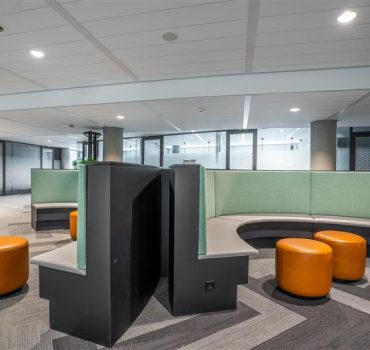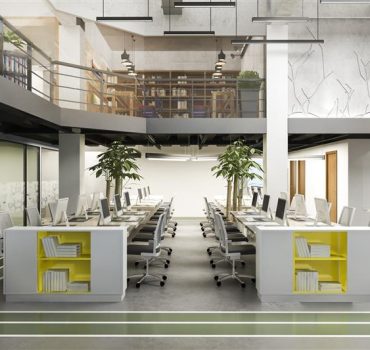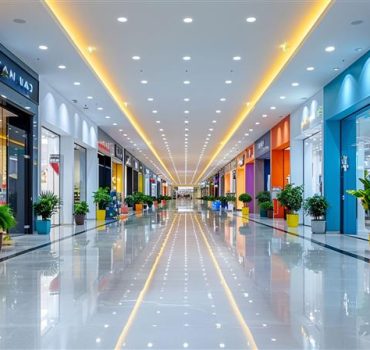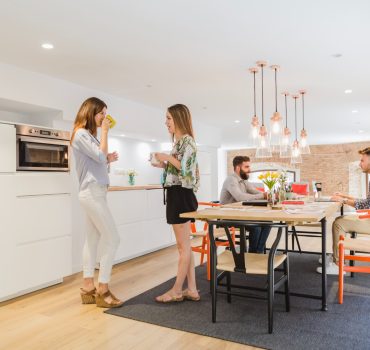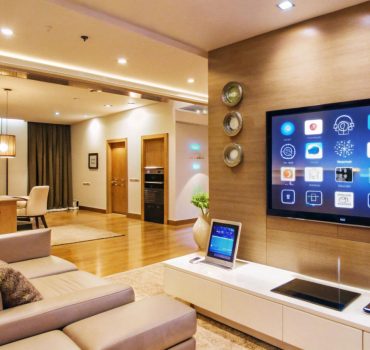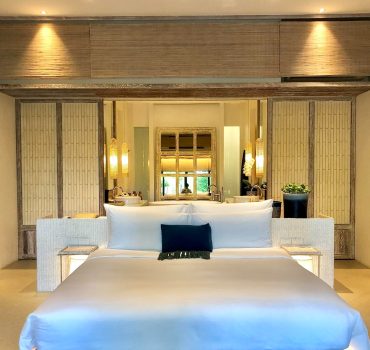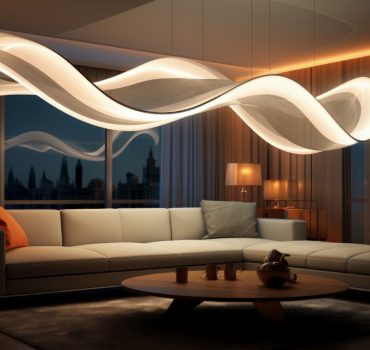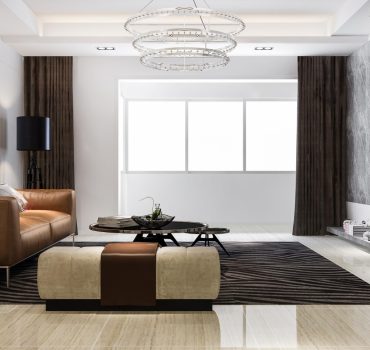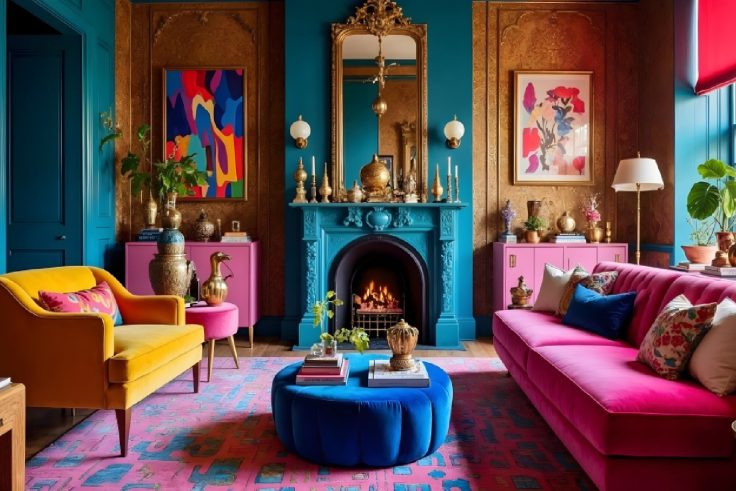
Synopsis
The realm of high-end residential interiors is no longer about mere extravagance—it’s about achieving a seamless fusion of interior architecture, comfort, and personal expression. As homeowners seek distinctive, meaningful living experiences, residential interior designers are responding with tailored environments that embody modern home interiors and timeless sophistication. This shift is most evident in residential design and build projects that prioritise comfort without compromising on aesthetics. Whether it’s a sleek apartment interior design or a palatial villa interior design, the intent is the same: to create spaces that resonate with luxury while remaining rooted in functionality. Through this blog, we explore how high-end residential interiors are evolving with the support of expert residential interior designers, advanced material palettes, spatial storytelling, and architectural detailing. We also highlight how residential design and build services empower clients with holistic project control, resulting in better outcomes and more joyful homes. This is a celebration of the art where interior architecture elevates comfort to an everyday luxury.
Table of Contents
ToggleIntroduction – Luxury Beyond the Surface
The Evolution of What ‘High-End’ Means
Today’s high-end residential interiors aren’t about visual excess. They focus on comfort, storytelling, wellness, and timeless beauty. As luxury becomes more internalised, interior architecture and thoughtful planning take centre stage. Homeowners now seek homes that are not only impressive but intuitive—spaces where materiality, light, flow, and energy align to support holistic living.
What Defines High-End Residential Interiors Today
Personalisation, Craftsmanship, and Comfort
High-end interiors are curated, not copied. Every element—from the flooring and lighting to the ceiling coves and joinery—carries intention. Residential interior designers craft these homes with great attention to user experience. Whether it’s in apartment interior design or sprawling villas, high-end design today means livability with elegance, and detail without distraction.
Interior Architecture – The Soul of Modern Home Interiors
Designing the Skeleton Before the Skin
Interior architecture forms the bones of any home. It involves zoning, spatial hierarchy, proportion, and flow. It allows modern home interiors to function gracefully. For example, well-planned corridors that open into daylight-filled lounges, or arches that frame visual sightlines. Residential design and build firms integrate interior architecture from the start to ensure design integrity throughout the project lifecycle.
Apartment Interior Design at the Luxury Level
Small Spaces, Grand Impressions
Even within compact apartments, high-end residential interiors thrive. Designers leverage interior architecture to optimise volumes, maximise light, and define function. Luxury finishes such as Italian marble, customised wardrobes, hidden appliances, and acoustic ceilings are commonly introduced. When space is limited, detail becomes more important, making every design decision impactful.
Villa Interior Design – A Showcase of Custom Detailing
Scale Meets Sophistication
Villa interior design allows full-scale expression of luxury. The spatial flexibility enables designers to include double-height spaces, skylights, internal courtyards, and expansive lounges. Interior architecture plays a critical role here—defining transitions, separating zones, and maintaining continuity. High-end residential interiors in villas often include personalised features such as art niches, wine rooms, or wellness pods.
The Role of Residential Interior Designers in Luxury Projects
The Designer as Visionary and Technician
In high-end residential interiors, the designer must wear multiple hats. They are creative directors, problem solvers, material experts, and project managers. Residential interior designers combine aesthetic instincts with architectural knowledge to bring a vision to life. Their role is especially vital when the interior architecture is complex or the brief demands tailored spatial solutions.
Why Residential Design and Build Is Ideal for High-End Homes
Seamless Execution, Higher Control
A residential design and build model offers unmatched coordination and quality assurance. It allows interior architecture, design, and construction to co-exist under a single team. This reduces delays, aligns vision with reality, and enhances accountability. For clients investing in high-end residential interiors, this model guarantees clarity, speed, and cohesive excellence from start to finish.
Design5 – Crafting Sophisticated Interiors that Embrace Comfort
A Studio with Design-First Thinking
Design5 approaches every project with the belief that comfort and architecture go hand-in-hand. Whether it’s a minimalist modern home interior or a detail-rich villa, we balance design expression with practical needs. Our work reflects architectural intelligence and emotional warmth, ensuring that every corner of your home tells your story with elegance.
Experience the Design5 Difference in Residential Interior Architecture
From Vision to Built Reality
Design5’s residential design and build services cover everything from spatial planning and concept development to final execution. We specialise in delivering high-end residential interiors that are both visually stunning and deeply personal. Our collaborative approach ensures that clients remain at the centre of the design journey while benefiting from our technical, creative, and project management expertise.
FAQs
What is the role of interior architecture in residential design?
Interior architecture focuses on the internal structure and spatial functionality of a home. It involves layout planning, proportion control, and space optimisation. In high-end residential interiors, interior architecture ensures that the home not only looks good but also functions smoothly. It sets the foundation for aesthetic choices and enhances liveability. Designers use it to define sightlines, lighting access, and user experience.
How can apartment interior design reflect high-end interiors?
Apartment interiors can reflect high-end appeal through strategic use of space, materials, and detailing. Designers integrate luxury materials, sleek storage systems, layered lighting, and thoughtful zoning. Customisation and material quality are essential in small spaces. Interior architecture plays a role in creating flow and function, even in tight layouts. With the right design, apartments can exude sophistication equal to larger homes.
Why are residential interior designers essential in luxury homes?
Residential interior designers bring creative direction, material knowledge, and technical expertise to high-end projects. They ensure that the space is functional, visually aligned with the client’s vision, and executed efficiently. In luxury homes, where detail is paramount, designers play a critical role in harmonising aesthetics with lifestyle needs. Their understanding of interior architecture adds lasting value.
What makes residential design and build ideal for luxury homes?
The design and build model eliminates fragmentation between design and execution. For luxury homes, where precision and speed are crucial, this integrated model ensures smooth coordination, reduced errors, and timely delivery. It offers the client a streamlined experience with better control over budget and quality. Every detail—from design to handover—follows a unified plan.
How do modern home interiors incorporate interior architecture?
Modern home interiors often use interior architecture to define open layouts, light sources, and visual balance. Design features like false ceilings, wall recesses, and floor transitions are planned with spatial logic. This creates homes that feel spacious, harmonious, and uncluttered. Interior architecture helps modern homes feel more intuitive, comfortable, and connected across rooms.
Recent Post
- Office Interior Design & Commercial Interiors: Building Spaces That Boost Business
- Office Interior Design & Commercial Interior Solutions: Creating Spaces That Boost Productivity and Image
- Office Interior Design & Corporate Interiors: Crafting Productive Workspaces with Style
- Retail Store Interior Design & Shop Layouts: Creating Immersive Shopping Experiences
- Corporate Interior Design & Office Layouts: Transforming Business Spaces into Brand Experiences


